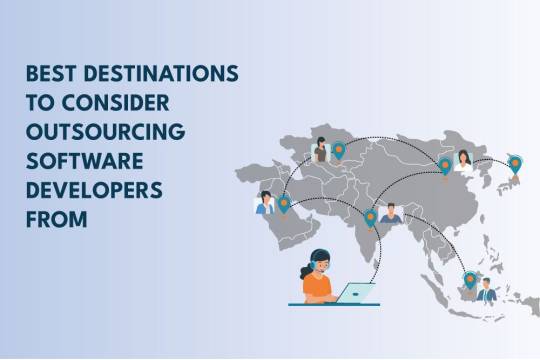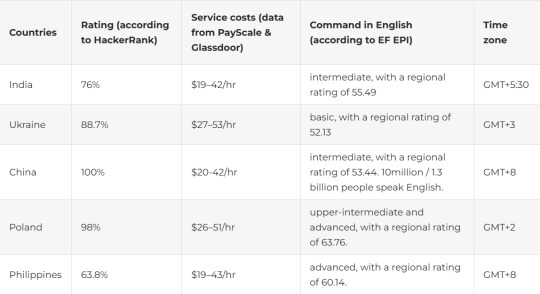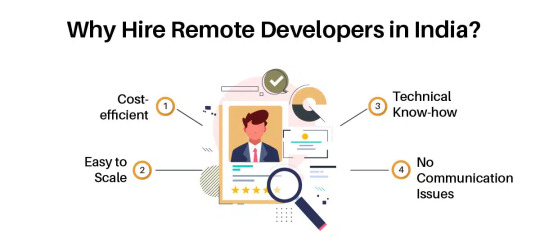#HireRemoteDeveloper
Explore tagged Tumblr posts
Text
Hire Top Remote Developers from India
Looking to hire top remote developers from India? Find expert talent at your fingertips for your projects. Hire dedicated Indian developers now!

#hireremotedevelopersindia#hireremotedevelopersinindia#hireremotedeveloper#hirededicatedremotedevelopers#hireremotesoftwaredevelopersindia
0 notes
Text
Unlock your digital potential. Hire a skilled web app developer to bring your ideas to life and revolutionize your online presence!
Visit: https://www.adhiraninfotech.com/hire-mobile-app-developer
Mail us : [email protected]
Contact us: 73059 76820 | 73059 76520

#hireMobileappdeveloper#hiredeveloper#mobileappdeveloper#softwaredevelopment#offshore#outsourcingservices#hiring#webdevelopment#appdevelopment#offshoreservices#outsource#staffaugmentation#hireremotedeveloper#adhiraninfotech#chennai
0 notes
Text
#jira#airtable#projectmanagementtool#hireremotedeveloper#hire dedicated remote developers#offshore development#outsourcing#staff augmentation#sofware development#MERN#node.js#react.js
0 notes
Text
🌐💻 Dive into the future of work with our latest blog!
Discover the power of building a dream team of remote developers – tapping into global talent, boosting productivity, and saving costs. 🚀💼
Explore key strategies, tools, and best practices for success in the digital era.
Ready to elevate your team? Check out the full post now! https://medium.com/@kanhasoftUSA/building-a-dream-team-why-and-how-to-hire-remote-developers-debf1db30f39
🌟💡
0 notes
Text

Hiring an Android developer doesn't have to be hard. See our advice on contracts, communication, and long-term success. Read more now. Contact us on +91 9408382596 Email us on [email protected] Explore our website: https://www.appcraft.tech/
#HireAndroidAppDevelopers#HireRemoteAndroidAppDevelopers#HireDedicatedDeveloper#HireDevelopersOnline#HireRemoteDevelopers
0 notes
Text
Best Destinations to Consider Outsourcing Software Developers
Software development is one of the fastest-growing career categories that has facilitated remote hiring, remote work & also supports freelancing combined with agile team practices. Businesses can cut down their operational cost, increase their gross profit, performance and competitive edge by leveraging remote team employment. There are a number of ways in which offshore developers can be hired. Hiring through Freelance portals, with outsourcing firms and hiring talented developersRemote hiring platforms are some popular methods however, each has its own pros and cons. In addition to choosing the type of remote developers, it is also important to choose profiles that fit your requirements. Choosing the most suitable country will provide an edge in terms of cost-effectiveness and work effectively despite time zone differences. Here is a list of the top 5 countries that can help find your potential teams
India
Ukraine
China
Poland
Philippines

Now let us analyze the above countries based on the Rating, service costs and time zone adaptation. The data are based on reports from reliable reports & surveys from sources such as Hacker rank, Payscale, Glassdoor, EF EPI, etc.

India
India is the second-largest English-speaking country in the world, which makes it easier to collaborate with the US & European employers looking to outsource. Mathematics and Science are given more weightage in their education system. As many as 2.6 million STEM specialists graduate in a single year. Per the research from Gild, Indian developers scored 11% more than their US counterparts on assessments on math and logic. The average annual salary for Indian software developers ranges from $11,139 and $38,000.
Ukraine
The Ukrainian government with a strong focus on education has no wonder built a thriving tech industry. Kyiv, Kharkiv, Dnipro, and Lviv, are some of the biggest IT hotspots bubbling with technology and skilled engineering students. Ukrainian developers had an average score of 88.7% according to Hacker rank reports. Ukraine also is home to the largest number of C++ programmers globally.80% of the IT community speaks English, so communication barriers are of least worries. Ukraine shares a similar working culture and its time zone partially overlaps with US and UK times. The average annual salary for a software developer in Ukraine ranges between $11,936 and $46,787.
China
China is home to several leading start-up IT companies. Around 4.7 million students graduate every year according to Forbes. HackerRank ranked China as the best IT outsourcing country. There are a few barriers to overcome before choosing china. Since only 10 million out of 1.3 billion Chinese residents speak English, companies recruiting the Chinese remotely have a large communication barrier.Second, the Chinese are quite negligent of Intellectual Property (IP) laws. However, establishing clear rules or getting help from outsourcing agencies can give you an edge when working with the Chinese developers.A Chinese developer can earn an annual salary ranging from 189,000CNY ($27,695.96) to 357000 CNY ($52,314.59).
Poland
Polish developers are the third most skilled programmers in the world according to reports & surveys. Poland has developers who are experts in Java, Python, Shell, and Ruby. The Tholons Globalization Index ranked Warsaw and Krakow, two of Poland’s largest cities among the top 50 cities with best developing talents. 30% of the Polish population speaks English as a second language, which can be beneficial for remote hires. The United States is 7 hours behind Poland. So time zone differences must be taken into account for projects that require constant collaboration. Salaries: Data from PayScale shows that the average software developer in Poland makes an annual salary of 85,069PLN, or $22,273.88.
Philippines
The Philippines has over 92% speaking English. Being a former American colony, they understand the western culture better. They also have a specialized STEM-based school education system in place. These are some of the factors that put them in the top ranks when remote outsourcing is concerned. Tholons Globalization Index has ranked the country’s capital, Manila, as the second-best city for remote outsourcing. Filipino software developers make between $10,563.40 and $14,202 annually.
Why should you opt for Indian Developers?
1. Extended talent pool
Along with in-house developers, Indian developers act as an extension to the team providing quality results. Rather than competing with local giants hiring local talents, businesses can opt for choosing exceptionally talented developers with remote hiring. Moreover, Indians are fluent in English speaking nations which means they are easier to communicate with.
2. Home to IT giants
India is home to numerous IT hubs like Bangalore, Chennai, and Hyderabad. India has productive and dedicated developers that deliver results. There are many IT outsourcing companies in India that help businesses in developed countries hire extraordinary talents.
3. Save Costs
Indian developers are paid less than their counterparts hired remotely from other countries. As mentioned above, Their annual average salary is around $507,219.
4.Favorable Time-zone
Most of the remote IT providers have flexible timings i.e, remote hires are ready to work even night shifts to collaborate with countries like US and UK who are more than 9.5 hours apart in time zone.
5. Get Faster Development
Since the remote teams can take off from where the in-house teams have clocked out, work is being done round the clock. This ensures faster development and client satisfaction.
6. High-Quality Standards
Every year around 2.6 million students graduate from IITs, NITs and other reputed institutions. So developers from India provide reliable outcomes & provide excellent services should controversy arise.
7. Export-Friendly Government Policies
The Indian government provides a lot of friendly outsourcing policies that help in the growth of the IT industry. These in turn are flexible for businesses who decide to get help from remote developers for specific projects on a long-term basis too.
8. Technical Expertise
It is not only possible to outsource freelancers and junior developers but even senior developers can be hired exclusively for high-end projects.
Final Thoughts
Before deciding on a country forremote hiring for software development , keep an eye on costs, adaptability of the IT market, quality of educational infrastructure, cultural differences, and so on. When building an offshore remote team, pay attention to whether the outsourcing company understands your company’s mission, goals and requirements. Remote hiring does not only aim at cutting costs but should help your business reach new heights in terms of quality and productivity.
0 notes
Text
Key Mistakes to Avoid When You Hire Dedicated Remote Developers
Hiring dedicated remote developers is a strategic move for many businesses, especially tech startups, SMEs, product managers, IT directors, and entrepreneurs. However, while the benefits are significant, so are the potential pitfalls. Whether you’re scaling your tech team, looking to augment your existing workforce, or building a new product, avoiding key mistakes can mean the difference between success and setbacks.
Let’s dive into the common challenges you may face and how to overcome them effectively.

What are Key Mistakes to Avoid When Hiring Dedicated Remote Developers?
1) Not Defining Clear Project Requirements
Importance of Clarity:
One of the first and most critical steps when you hire dedicated remote developers is ensuring that your project requirements are crystal clear. As someone who’s navigated the complexities of scaling a tech team, you know that vague instructions can lead to costly misunderstandings and missed deadlines. Your project’s success hinges on well-documented requirements, which set the stage for smooth execution and high-quality results.
Imagine starting a project with only a rough idea of the final outcome. Without a well-defined scope, timelines, and deliverables, your remote developers might head in the wrong direction, wasting both time and resources. This lack of clarity can lead to frustration on both sides, delaying your project and inflating costs — something no startup or SME can afford.
Key Elements to Include:
To avoid these pitfalls, ensure that your project documentation includes:
Project Scope: Clearly define what the project is about, its goals, and the expected outcomes.
Timelines and Deliverables: Establish key milestones and deadlines to keep the project on track.
Technical Skills and Experience Needed: Specify the exact technologies, tools, and experience levels required.
Budget: Provide a detailed budget, including provisions for unexpected expenses.
This level of detail not only helps you find the right developers but also sets clear expectations, ensuring everyone is on the same page from day one.
2) Ignoring Cultural Fit
The Role of Company Culture:
When hiring remote developers, cultural fit is just as important as technical skills. As a product manager or IT director, you know that a misalignment in work culture can lead to friction, miscommunication, and ultimately, poor project outcomes. Your remote developers are an extension of your in-house team, and if they don’t share your company’s values or work ethic, it can disrupt the harmony and productivity you’ve worked hard to cultivate.
Cultural differences, such as varying attitudes toward deadlines, feedback, or collaboration, can lead to significant challenges. For instance, if your in-house team values open, frequent communication but your remote developers come from a culture where this is less common, you might experience delays or misunderstandings that could have been avoided.
Assessing Cultural Fit:
To ensure a good cultural fit, consider these strategies:
Behavioral Interviews: Ask questions that reveal how candidates handle challenges, communication, and teamwork.
Cultural Assessments: Use tools or questionnaires to gauge how well candidates align with your company’s values.
Trial Projects: Implement a short-term project to observe how the developer interacts with your team and adheres to your work culture.
This proactive approach can save you from the headaches of cultural misalignment, leading to a more cohesive and productive team.
3) Skipping Technical Assessments
Importance of Technical Skills:
In the rush to hire dedicated remote developers, it’s tempting to skip thorough technical assessments, especially when a candidate seems to have a strong resume or good references. But as someone tasked with ensuring high-quality outcomes, you understand that this is a risk you can’t afford to take. A mismatch in technical skills can lead to subpar work, missed deadlines, and ultimately, a product that doesn’t meet your expectations.
Technical assessments are your safety net, ensuring that the developer you hire has the expertise to handle the complexities of your project. Whether you’re developing a new product, scaling an existing one, or integrating with legacy systems, you need to be confident that your remote team can deliver.
Effective Assessment Methods:
To accurately gauge a candidate’s technical skills, consider the following:
Coding Challenges: Present real-world problems to solve, allowing you to assess their problem-solving abilities and coding proficiency.
Technical Interviews: Dive deep into technical questions related to your project to evaluate their understanding and approach.
Portfolio Reviews: Examine past work to ensure it aligns with the quality and style you expect.
These steps will help you avoid the costly mistake of hiring someone who isn’t up to the task, ensuring your project stays on track and meets your high standards.
4) Underestimating Time Zone Differences
Challenges of Different Time Zones:
One of the most common challenges when you hire remote developers is managing time zone differences. As an entrepreneur or IT manager, coordinating work across different time zones can lead to communication delays, missed deadlines, and inefficiencies that slow down your project.
For example, if your in-house team is in New York and your remote developers are in India, there’s a 9.5-hour time difference. Without careful planning, this can lead to days of delay in communication and decision-making, putting your project behind schedule.
Solutions for Time Zone Management:
To mitigate these challenges, consider the following strategies:
Overlap Hours: Schedule meetings during times that overlap for both your in-house and remote teams, even if it’s just a couple of hours each day.
Flexible Schedules: Encourage your remote team to adopt a flexible schedule that allows for more real-time collaboration.
Clear Expectations: Set expectations for response times and availability to ensure that everyone knows when they’re expected to be online.
By addressing time zone challenges head-on, you can maintain momentum and keep your project moving forward without unnecessary delays.
5) Failing to Establish Communication Protocols
Importance of Communication:
Effective communication is crucial for any remote development project. As someone responsible for overseeing product development, you know that poor communication can lead to misunderstandings, misaligned goals, and missed deadlines. Without clear communication protocols, remote developers might feel disconnected, and the quality of work can suffer.
For instance, without regular check-ins, your remote team might not fully understand your project’s evolving needs, leading to work that’s off-target. Or, they might miss critical updates because they’re not clear on which communication channels to monitor.
Recommended Communication Tools:
To avoid these pitfalls, establish a robust communication framework using the following tools:
Slack: Ideal for real-time messaging and quick updates, helping you stay connected with your remote team throughout the day.
Zoom: Best for video conferencing and face-to-face meetings, ensuring clear communication and rapport-building.
Project Management Software: Tools like Asana or Trello keep everyone aligned on tasks, deadlines, and progress, reducing the risk of miscommunication.
Setting Expectations for Communication:
Set clear guidelines for communication to keep everyone on the same page:
Frequency of Updates: Decide on how often updates are needed — daily stand-ups, weekly reports, etc.
Preferred Channels: Designate specific tools for different types of communication (e.g., Slack for quick questions, email for formal updates).
Response Times: Set expectations for how quickly team members should respond to messages.
With these protocols in place, you’ll foster a more collaborative and productive environment, reducing the risks of miscommunication.
6) Not Considering Legal and Compliance Issues
Legal Considerations:
Navigating the legal complexities of hiring remote developers can be daunting, especially for SMEs and startups. Overlooking these issues can lead to serious legal disputes, intellectual property challenges, and compliance problems that can jeopardize your entire project.
For example, if you don’t clearly define intellectual property rights in your contract, you might face challenges in claiming ownership of the work your remote developers produce. Additionally, failing to comply with local labor laws in the developer’s country can result in fines or legal action, something that could be particularly damaging to a young company.
Ensuring Compliance:
To protect your business, ensure you:
Draft Clear Contracts: Define terms of engagement, payment schedules, and confidentiality agreements.
Non-Disclosure Agreements (NDAs): Secure your sensitive information by requiring NDAs from all remote developers.
IP Rights: Explicitly state who owns the intellectual property created during the project.
Compliance with Local Laws: Research and adhere to labor laws and regulations in the developer’s country to avoid legal complications.
Taking these steps will help you avoid legal pitfalls, allowing you to focus on delivering a successful project.
7) Overlooking Onboarding Processes
Importance of Effective Onboarding:
Onboarding remote developers is more than just providing them with access to your systems; it’s about integrating them into your team’s culture and workflow. Neglecting this process can lead to confusion, disengagement, and ultimately, poor performance — outcomes that any tech startup or SME wants to avoid.
For instance, if your remote developers don’t fully understand your project’s goals or how their work fits into the bigger picture, they may not be as motivated or effective. A well-structured onboarding process ensures that your remote team members feel welcomed, informed, and ready to contribute from day one.
Key Elements of Onboarding:
To ensure a successful onboarding process, include the following:
Orientation: Introduce your remote developers to your company’s mission, values, and organizational structure.
Training Resources: Provide all necessary tools, systems access, and documentation to help them hit the ground running.
Team Introductions: Facilitate introductions to key team members to establish communication channels and foster collaboration.
By investing time in proper onboarding, you’ll set your remote developers up for success, ensuring they can contribute effectively from the outset.
8) Not Building a Long-term Relationship
The Value of Long-term Partnerships:
Building long-term relationships with your remote developers can lead to better project outcomes and a more cohesive team. High turnover, on the other hand, can disrupt your projects, leading to delays and a loss of continuity — challenges that can be particularly detrimental for tech startups and growing SMEs.
When your remote developers feel valued and connected to your mission, they’re more likely to stay committed and deliver high-quality work. This continuity not only benefits your current projects but also positions you for future success.
Strategies for Building Trust:
To foster long-term relationships, consider these approaches:
Regular Check-ins: Schedule consistent meetings to discuss progress, address concerns, and provide feedback.
Feedback Loops: Establish a system for giving and receiving feedback to continuously improve collaboration and performance.
Recognition of Contributions: Acknowledge and reward the developer’s efforts to keep them motivated and engaged.
By prioritizing these relationships, you’ll create a loyal, motivated remote team that’s dedicated to helping your business succeed.
Conclusion
To hire dedicated remote developers successfully, avoid vague project requirements, neglecting cultural fit, skipping technical assessments, underestimating time zones, failing to establish communication protocols, ignoring legal issues, overlooking onboarding processes, and not building long-term relationships.
Ready to hire dedicated remote developers? Partner with iQlance to find the best talent for your project.
Contact us today OR Call us at (+1) 917 477 8991 to get started and take the first step toward a successful collaboration!
#hirededicatedremotedevelopers#iqlance#hireremotedevelopers#dedicatedremotedevelopers#remotedeveloperhiringmistakes#hiringremotedevelopers#dedicateddevelopmentteam#outsourcingdevelopers#remotesoftwaredevelopment#remotedevelopermanagement#freelancedevelopers#offshoredevelopmentteam#remotedevelopmentchallenges#remoteteamcollaboration#bestpracticesforremotehiring#developerrecruitmentprocess#remoteworkpitfalls
0 notes
Text
Discover the top sites to hire remote developers for your business growth
youtube
Now companies are realizing the benefits and needs of a remote workforce. Remote work has become necessary for many businesses, especially after the pandemic. There has been significant growth in hiring remote developers in the IT industry in recent years. There are countless sites across the globe offering hiring services for remote developers. and that's why many businesses find it difficult to choose the right platform to hire remote developers.
So, after researching the best sites to hire remote developers, we came up with a list of the top sites for hiring remote developers in the following video. which are known for their best service reliability and cost efficiency.
0 notes
Text
Team On Time: Masters of Precision in Web Development and Marketing
Best Remote Developers available for us. Team On Time boasts a track record of delivering projects punctually without compromising on quality. Their forte lies in crafting bespoke websites and comprehensive digital marketing campaigns that align perfectly with client goals. Their approach revolves around efficiency and reliability, ensuring timely delivery without sacrificing excellence. Top Developers are available. Their prowess spans across various industries, showcasing adaptability and expertise in catering to diverse client needs. With a focus on meeting deadlines while maintaining exceptional standards, Team On Time is a trusted name in the web design and digital marketing sphere.
These companies exemplify the pinnacle of web design and digital marketing expertise, each bringing unique strengths to the table. Whether it's innovative design, strategic marketing, or reliable execution, these industry leaders are reshaping the digital landscape, one project at a time. We provide different services like, Shopify Developer, Wordpress Developer, Flutter Developer, Webflow Developers, Python App Development, Hire Remote Developers.
#BestRemoteDevelopers#TopDevelopers#ShopifyDeveloper#WordpressDeveloper#FlutterDeveloper#WebflowDevelopers#PythonAppDevelopment#HireRemoteDevelopers
0 notes
Text








The software development lifecycle needs skilled software developers to be successfully completed and repeated. Read our article to learn how software developers help small businesses grow in 2023.
#HireRemoteDevelopers#remoteresource#remotework#smbs#supportsmallbusinesses#remotehiring#outsourcing#smallmediumbusinesses
0 notes
Text
#HireRemoteDevelopers#RemoteDevelopers#HireDevelopers#programming#frontenddevelopers#backenddevelopers
0 notes
Text
How Much Time Does It Take To Learn MEAN Stack?

If you’re wondering how much time it will take to learn the MERN stack, keep reading. In this article, you'll discover a few factors that will determine your learning pace and help you reach MERN mastery faster.
What Is The MERN Stack?
The MERN Stack is the most popular front end development stack for building web applications. It includes the frameworks and tools that you’ll need to get started building web applications. It’s named after the four pillars of the stack:
modularity - The ability to write code that can run as code, with no need for a specific user interface.
end-to-end - The ability to write code that can run anywhere, on any device.
React - The ability to write code that can change over time.
Now - The ability to quickly write code that can be deployed and tested immediately.
Learn JavaScript fundamentals first
Before diving into the MERN stack, it’s important that you understand the fundamentals of JavaScript. JavaScript is a programming language that runs on computers. It’s one of the most popular programming languages, and it’s used to build web applications. JavaScript is part of the larger family of programming languages known as the “elastic language” due to its ability to be run on any device. Although JavaScript is an expressive language, it’s also very flexible. It lets you write code that can run as code, on any device, without needing a specific user interface.
Write JavaScript code frequently
As you begin learning the JavaScript language, you should also start writing JavaScript code frequently. While you can write complex applications if you use the language sparingly, you’ll obtain a deeper level of proficiency and experience with the language if you write code frequently. If you’re trying to learn the language, you should try to write 10-20 lines of code every day.
Learning Path for the MERN Stack
Now that you understand what the MERN stack is and how to get started learning it, let’s see how you can learn the stack. When you’re getting started with the MERN stack, you’ll want to start by learning the fundamentals of JavaScript. You should read the JavaScript Essential Learning Path to get a better understanding of how and why JavaScript works.
After you’re comfortable with the language, you can begin building web applications. Begin building apps with the JavaScript Foundations course. After you’ve built a few apps, you’ll want to think about testing your code. Try to write automated tests for your code whenever possible. Learning how to write tests for your code is essential to becoming a better developer.
If you are looking to hire a Mern full-stack developer, go to ultraGenius. They have a number of candidates and they have more than 3 years of experience.
0 notes
Text
𝐋𝐨𝐨𝐤𝐢𝐧𝐠 𝐟𝐨𝐫 𝐚 𝐩𝐫𝐨𝐟𝐞𝐬𝐬𝐢𝐨𝐧𝐚𝐥 𝐰𝐞𝐛𝐬𝐢𝐭𝐞? But confused about whom to trust with your digital presence?
Do you want to build your website in the hands of certified web developers?
𝗗𝗼 𝗻𝗼𝘁 𝘄𝗼𝗿𝗿𝘆!
Get in touch with #Qservices today to give your website a professional touch from our team of certified web developers.
👉 𝘾𝙤𝙣𝙩𝙖𝙘𝙩 𝙐𝙨: https://www.qservicesit.com/

#hireremotedeveloper#hirephpdeveloper#hirewordpressdeveloper#hirededicateddeveloper#hireadeveloper#hirejavadeveloper#hiremagentodeveloper#hireiosdeveloper#hireandroiddeveloper
0 notes
Text
Hire Remote Development Team - Make Your Team
Looking for a team of developers to help you with some of your more challenging projects? Look no further than Virtual Experts. Our remote development team is experienced and skilled in a wide variety of programming languages, so they'll be able to get the job done quickly and efficiently. Contact us today and get started on your project.

0 notes
Text

When you need to hire hands to help you build a capable application for your business, you should ensure you move from one step to another. Completing each phase before stepping onto the other ensures you get the right person on board.
0 notes